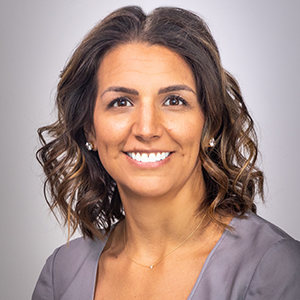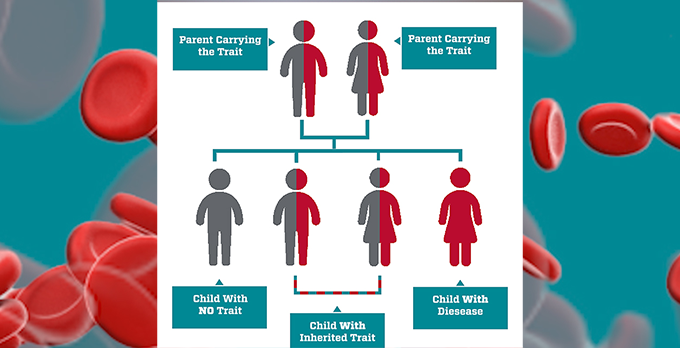Sickle cell disease (SCD), a genetic blood disorder, affects thousands of children in the United States, leading to frequent pain crises and a variety of complications that require lifelong medical care. At the UNM Health Sciences Center, families navigating pediatric SCD share their stories of strength, resilience, and hope as they partner with medical teams to manage this complex condition.
A Family's Journey: Olivia's Story
For Linna and Dan Dominguez, their journey with SCD began the day their daughter Olivia was born. "The same day she was born, they did the routine blood tests and told us she had full-on sickle cell," Linna recalls. The Dominguez family already had some knowledge of the condition, as Olivia’s brother carried the sickle cell trait, but learning that Olivia had the disease itself was a life-changing moment.
“When I was told that she had sickle cell disease, I kind of dug into research,” Linna says. “It really scared me. They were talking about lifespan... and some kids don’t even make it to adulthood.” But despite their fears, the Dominguez family found support through medical professionals who helped them manage Olivia’s care and her parents’ fears. “Olivia’s doctor, who we love, told us every kid is different, and we would have to proceed little by little,” Linna reflects. “There was definitely a lot of learning to do.”
Olivia, now five, is a vibrant, curious child who loves her family, dogs, and—if she had her way—would also have a cat. Her parents strive to give her a life full of joy, while taking necessary precautions. “The best thing I heard from another father,” Dan says, “is you just got to let them live. We’ll see what the future holds, but we try to be cautious while letting her be herself.”
Their treatment journey has included hydroxyurea, which Linna believes has significantly reduced Olivia’s pain crises. "She was going through pain crises quite often, but now she doesn't have them as frequently."
Throughout it all, UNM’s pediatric sickle cell team has been a pillar of support. “They have been nothing but amazing with Olivia,” says Linna.
Medical Expertise: Insights from Dr. Maria Maruffi
Maria Maruffi, MD, a pediatric hematologist-oncologist at the UNM Children’s Hospital, explains that sickle cell disease is caused by a change in hemoglobin, the protein in red blood cells that carries oxygen throughout the body.
“Sickle cell is diagnosed through newborn screening,” Maruffi notes. “Usually within a couple of weeks of life, we can detect it.”
The consequences of SCD can be severe, affecting almost every organ in the body due to the damage caused by sickled blood cells. “You can have damage to organs like the brain, kidneys, and eyes,” Maruffi says. “And the largest concern in day-to-day life is the pain crises, which can last from hours to days.”
Despite these challenges, Maruffi emphasizes that there is hope. "In the last five years, there have been advancements in gene therapy, which can replace the defective genes causing the disease." She also mentions that bone marrow transplants, another curative option, have shown success for some patients. However, these treatments are not without risks, and many families are still weighing their options.
David's Experience: Hope for the Future
For Antoine Bondima and his son David, now eight, the early years of managing sickle cell disease were filled with uncertainty and hospital visits. “Every year, from year one to year six, David got admitted to the hospital about twice a year,” Antoine says. But things started to improve when David began a new medication two years ago. “Since then, he’s been doing a lot better.”
David echoes his father’s optimism. “For the past two years, I haven’t really had to go to the hospital much. If I do get a crisis, they usually last only a few hours and aren’t as severe.”
Despite the availability of gene therapy, Antoine remains cautious about opting for it just yet. “It’s still kind of in its infancy. We might wait until it’s more established, especially since David has been doing so much better recently.”
Looking to the future, Antoine and David are both hopeful. “I really feel for anybody who has to go through this,” Antoine says. “But you can get through it. It takes a lot of work and education, but there’s been a lot of research and it’s getting better.”
Takeaways for Families
The families and medical professionals working with pediatric sickle cell patients at UNM offer a shared message of resilience and hope. Linna Dominguez encourages families not to be afraid to ask questions and seek help. “Don’t be afraid to take your kid to the doctor if you feel like you need to. Don’t feel like you’re wasting someone’s time,” she says.

Sickle cell is more common than people realize. We, as healthcare providers, need to advocate for and treat these patients.
For Antoine Bondima, educating his son about his condition has been crucial. “I try my best to let my son know what he has so that he can help with it himself,” he says. His son David offers a simple but powerful reflection stating “the medical people (at UNM), they’ve been really helpful and made the whole process more bearable. And I’m really thankful for that.”
As research continues and treatment options improve, families like the Dominguez’s and Bondima’s remain optimistic about the future.
“Let them live their life,” says Dan Dominguez. “Kids will be kids—don’t limit them.”
UNM: A Beacon of Support
UNM’s pediatric sickle cell program provides comprehensive care, including treatment, support groups, and family education, empowering parents and patients alike. With ongoing research and evolving treatment options, families are finding new ways to manage sickle cell disease, offering hope for brighter tomorrows.
